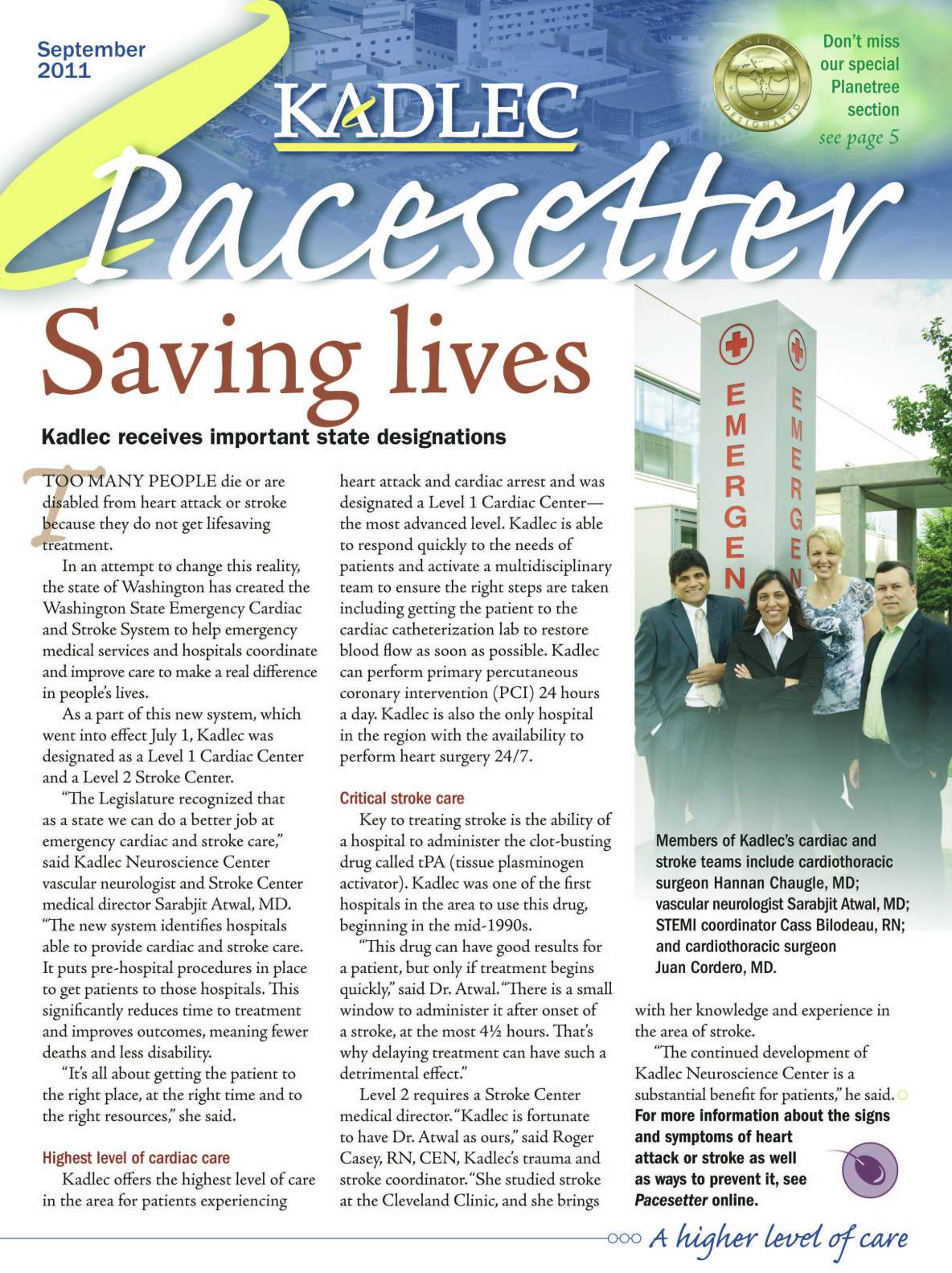Basic HTML Version




T
www.kadlecmed.org
TOO MANY PEOPLE die or are
disabled from heart attack or stroke
because they do not get lifesaving
treatment.
In an attempt to change this reality,
the state of Washington has created the
Washington State Emergency Cardiac
and Stroke System to help emergency
medical services and hospitals coordinate
and improve care to make a real difference
in people’s lives.
As a part of this new system, which
went into effect July 1, Kadlec was
designated as a Level 1 Cardiac Center
and a Level 2 Stroke Center.
“#e Legislature recognized that
as a state we can do a better job at
emergency cardiac and stroke care,”
said Kadlec Neuroscience Center
vascular neurologist and Stroke Center
medical director Sarabjit Atwal, MD.
“#e new system identifies hospitals
able to provide cardiac and stroke care.
It puts pre-hospital procedures in place
to get patients to those hospitals. #is
significantly reduces time to treatment
and improves outcomes, meaning fewer
deaths and less disability.
“It’s all about getting the patient to
the right place, at the right time and to
the right resources,” she said.
Highest level of cardiac care
Kadlec offers the highest level of care
in the area for patients experiencing
Saving lives
Kadlec receives important state designations
heart attack and cardiac arrest and was
designated a Level 1 Cardiac Center—
the most advanced level. Kadlec is able
to respond quickly to the needs of
patients and activate a multidisciplinary
team to ensure the right steps are taken
including getting the patient to the
cardiac catheterization lab to restore
blood flow as soon as possible. Kadlec
can perform primary percutaneous
coronary intervention (PCI) 24 hours
a day. Kadlec is also the only hospital
in the region with the availability to
perform heart surgery 24/7.
Critical stroke care
Key to treating stroke is the ability of
a hospital to administer the clot-busting
drug called tPA (tissue plasminogen
activator). Kadlec was one of the first
hospitals in the area to use this drug,
beginning in the mid-1990s.
“#is drug can have good results for
a patient, but only if treatment begins
quickly,” said Dr. Atwal. “#ere is a small
window to administer it after onset of
a stroke, at the most 4½ hours. #at’s
why delaying treatment can have such a
detrimental effect.”
Level 2 requires a Stroke Center
medical director. “Kadlec is fortunate
to have Dr. Atwal as ours,” said Roger
Casey, RN, CEN, Kadlec’s trauma and
stroke coordinator. “She studied stroke
at the Cleveland Clinic, and she brings
with her knowledge and experience in
the area of stroke.
“#e continued development of
Kadlec Neuroscience Center is a
substantial benefit for patients,” he said.
For more information about the signs
and symptoms of heart
attack or stroke as well
as ways to prevent it, see
Pacesetter
online.
A "ig"#r l#v$% & c'r(
September
2011
Members of Kadlec’s cardiac and
stroke teams include cardiothoracic
surgeon Hannan Chaugle, MD;
vascular neurologist Sarabjit Atwal, MD;
STEMI coordinator Cass Bilodeau, RN;
and cardiothoracic surgeon
Juan Cordero, MD.
Don’t miss
our special
Planetree
section
see page 5

